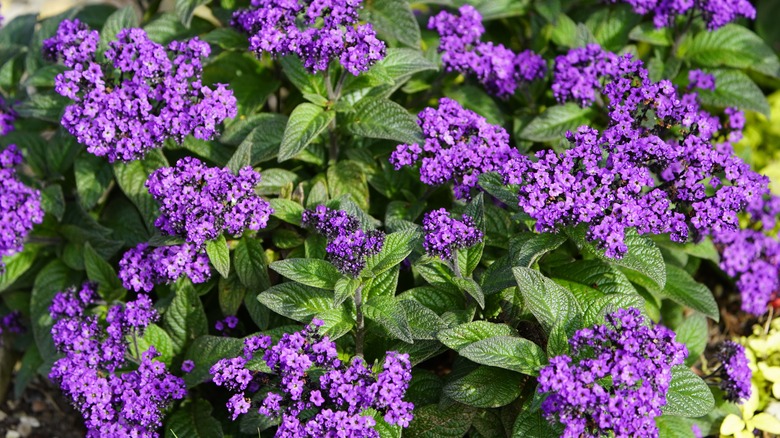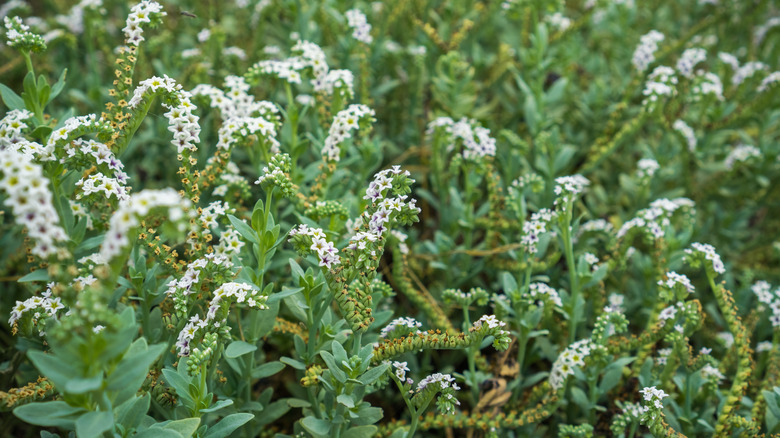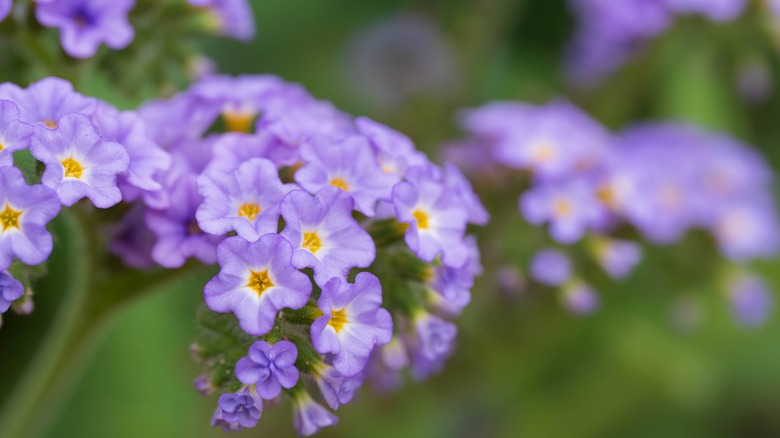Heliotrope Flowers: Which Varieties Are A Beautiful Addition & Ones To Avoid
Heliotropes are a gorgeous genus of flowers, with some species even native to North America. The right heliotrope can not only bring beauty and a fragrance compared to vanilla to your yard, but can also attract butterflies and hummingbirds. Even better, deer generally avoid heliotropes. Many of the beautiful flowers can be perfect for your garden, but others, like the clasping heliotrope and European heliotrope, are aggressive and potentially invasive plants that should be avoided by growers outside their native ranges. While there are some very real downsides if you pick the wrong heliotrope variety, native options like seaside heliotropes and non-aggressive species like Peruvian heliotropes can be ideal for many gardens across North America.
Heliotropes are grown as annuals in much of North America, but gardeners in zones 9 and 10 can also grow many varieties as perennials. While their soil needs vary by species, most thrive in sunny and part shade locations. Despite the benefits they can have for pollinators, all heliotropes can be toxic, especially in large quantities, so gardeners with young children or curious pets may want to avoid this genus altogether. According to the NC State Extension, consistent consumption can lead to digestive and liver issues.
Growing native and non-invasive heliotropes
North America is home to some stunning heliotropes, including the charming seaside heliotrope (Heliotropium curassavicum), which is native to the Southern and Western United States. As its name suggests, this plant holds up well to the moist and salty conditions found along coasts and wetlands and thrives in sandy soils. Even better, its charming white flowers provide a great food source for bees and butterflies. While not available at all garden centers, some native nurseries do carry seaside heliotrope plants and seeds.
Growers in North America can also consider planting the popular Peruvian heliotrope (Heliotropium arborescens). Despite being native to Peru, not North America, it grows well as an annual and has not been shown to exhibit invasive tendencies. It can have blue, white, or violet flowers, but the cultivars with bold purple flowers are especially striking. Before planting your heliotrope, make sure you have a good spot for it in the garden. The Peruvian heliotrope grows well in moist but well draining soil and enjoys full to part sun.
Avoiding aggressive and nonnative heliotropes
While there are many species in the heliotrope genus that make ideal additions to North American gardens, there are also some that should be avoided. The clasping heliotrope (Heliotropium amplexicaule) is one such species, with many sources considering it invasive, especially in Hawaii and other warmer states. Not only can the plant spread by rhizomes, but it also produces large numbers of seeds. It doesn't just have the potential to crowd out native plants though, it can also quickly spread into grazing areas for livestock, where it can injure, or even potentially kill cows and horses. Clasping heliotrope can be identified by its clusters of purple or pink flowers, low growing and spreading habit, and toothed leaves. Because clasping heliotrope can regrow from its roots, it is important to pull out the whole plant when removing it.
European heliotrope (Heliotropium europaeum) is another non-native heliotrope with significant downsides. Not only can it live in USDA zones 5 through 11, but it can also cause many of the same problems for livestock that clasping heliotrope causes. While it can be controlled with herbicides, it often takes repeated applications before the plant is fully eradicated. European heliotrope can reach a little over a foot tall and has fuzzy leaves and small white flowers. If you are struggling to tell if a weed in your yard is one of these invasive heliotrope varieties, you can use Google to help identify the plant.


